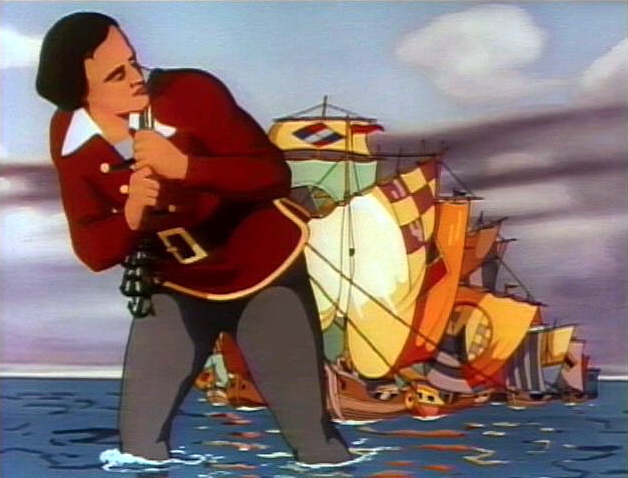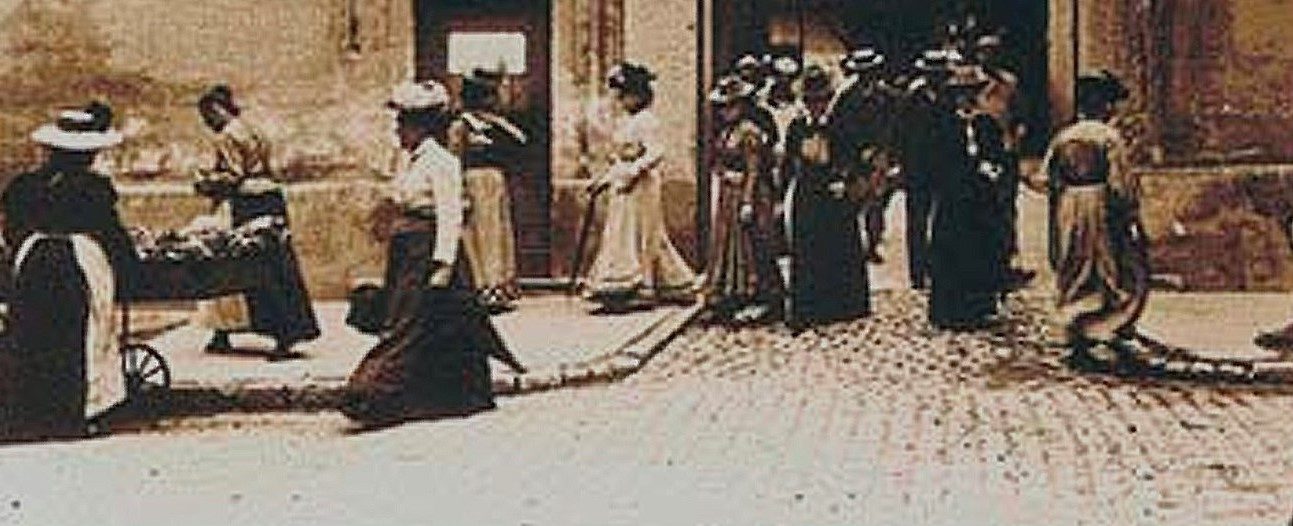United States, 1939
Directed by Dave Fleischer
(Animated movie)

The title is a bit misleading: this is not a comprehensive adaptation of the book by Jonathan Swift, grappling on-screen with its key themes and events. It is in fact a loose, good-humored take on the adventures of stranded mariner Gulliver in the kingdom of Liliput, after a storm, powerfully illustrated in the film’s opening sequence, tossed him on the shore of a mysterious isle.
The face-to-face between two widely different human races gets a specific visual treatment: if the small people of Liliput are often drawn and animated through conventional techniques, the man they see as a giant has been designed with the rotoscope technique director Dave Fleischer and his brother and producer Max Fleischer have pioneered, the animators tracing the real-life gestures of actor Sam Parker, who also lends his voice to this Gulliver. This difference yields images that feel a bit awkward, the rotoscope-based character looking oddly surreal, too much of an imitation of life, amid the cartoonish world around him.
But then perhaps he could be viewed such an eerie presence to the small folks living in that magical place. Anyway, the film is mostly theirs: once Gulliver collapses on the beach, it would take more than half of the running time of 76 minutes before he becomes alive again, and acts as a character. In this long meantime, the film depicts how the kingdom’s king gets a war on his plate, and how the town’s crier (for this kingdom is essentially a town very much alike a medieval European one) and night watcher, Gabby, tries to convince folks of the presence of a giant nearby and then commandeers the efforts of all the kingdom’s inhabitants to tie the giant up and bring him to the king. The detailed, delicate description, full of funny anecdotes and impressive works, of Gulliver’s capture is a stunning show of skills and flair, and remains as engrossing and charming decades later as it was for the delighted audience of 1939.
The rest of the plot, once Gulliver came around, shows the camaraderie that quickly bond the sailor and the people of Liliput, in particular Gabby, and how he meddles into the conflict pitting them against neighboring kingdom of Blefuscu, born out of the anger of the king of Blefuscu at the refusal of the king of Liliput to let a traditional Blefuscu wedding song be sung at the marriage between their beautiful children, Glory, the heiress of Liliput, and David, the heir of Blefuscu. The common sense and generosity of the giant prevail (not such a bad thing to be a regular guy): why making war over songs when it would be better just to sing all the songs and celebrate a pure, deep feeling of love – that the film plainly emphasizes by drawing both lovers as far more nice-looking and closer to us than their fellow countrymen (rotoscope proved useful).
On the whole this is a highly entertaining film, safely building on the expertise and success of the Fleischer brothers in animated short films, including those featuring another famous sailor, Popeye. The characters belong to the same stock of vividly comical, delightfully grotesque, genuinely striking and exciting drawings that are breezily, cleverly animated. From kings to artisans, from Liliput’s Gabby to Blefuscu’s spies, here is a collection of strongly designed characters that instantly pleases. Their story is full of inventiveness, often furthering the comedy (like the foolish pigeon carrying messages between the spies and their king), but also injecting more poetry (like the adorable couple of bluebirds mirroring the feelings of the royal lovers).
This is only the second animated feature in US cinema history, the first being Walt Disney’s “Snow White and the Seven Dwarfs” in 1937. Indeed, the film is the response of the Paramount Studio and the Fleischer brothers to groundbreaking work of Disney, who was reportedly unimpressed by their efforts. But these “Gulliver’s Travels”, despite some reservations, are still a fine milestone in the history of animated movies.

